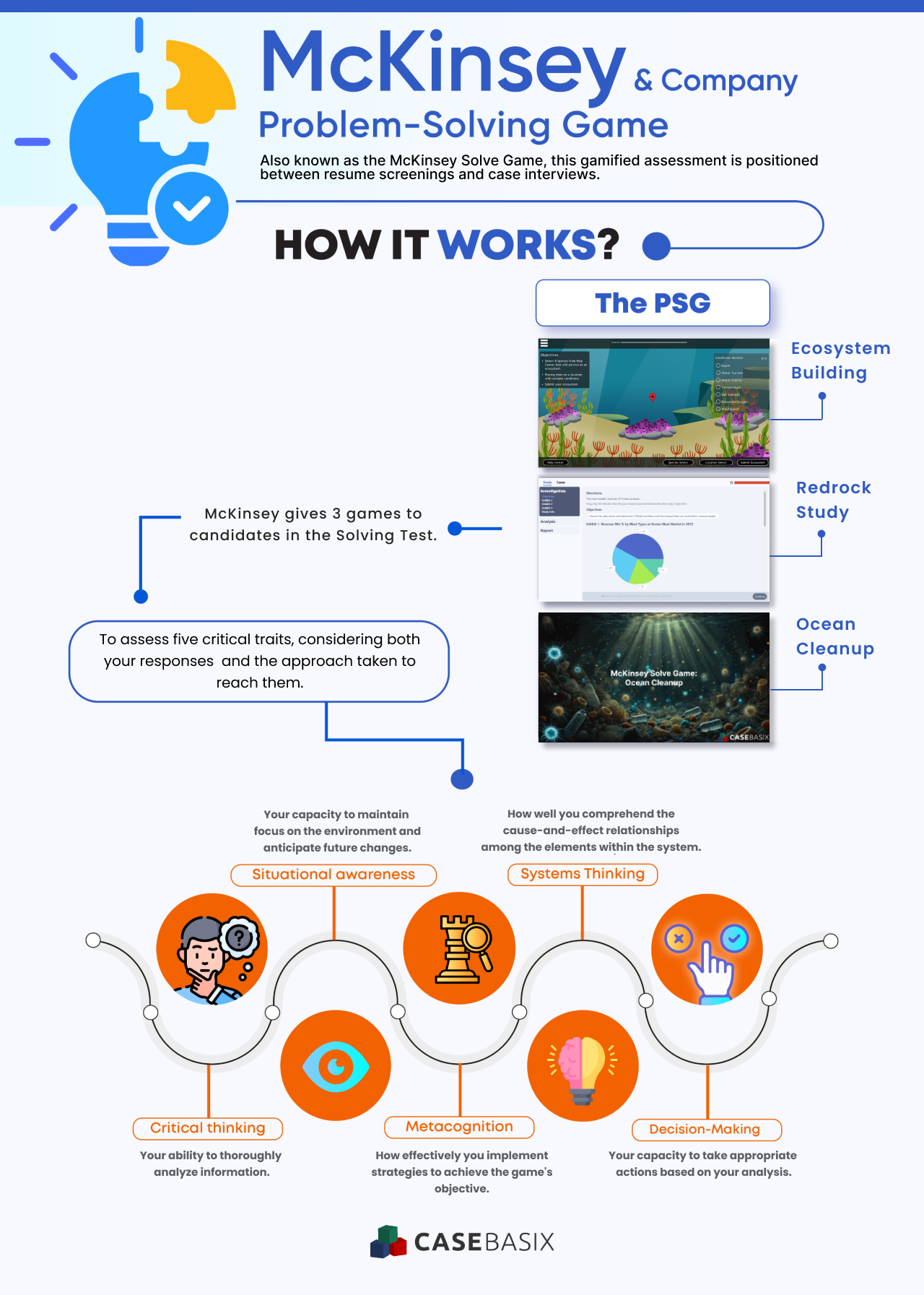The McKinsey Problem Solving Game, commonly referred to as the Solve Game, includes one of the newest and most intricate challenges: the Ocean Cleanup Game. This mini-game tests your ability to think critically, manage multiple variables, and make strategic decisions under pressure.
In this challenge, you’ll take on the role of a strategist tasked with cleaning up two polluted ocean sections by selecting microbes that can adapt to their unique conditions. While the goal sounds simple, the complexity of the attributes involved and the limited time frame make it a true test of your problem-solving skills.
This guide will help you navigate the Ocean Cleanup Game by breaking down its structure, key strategies, and common pitfalls to avoid.
What Is the Ocean Cleanup Game?
The Ocean Cleanup Game is a part of the McKinsey Problem Solving Game that evaluates critical thinking and systems thinking. The task involves managing two ocean sections, each with specific attributes such as temperature, depth, and types of pollution. Candidates are required to select microbes that can thrive in these environments while optimizing plastic reduction.
Each microbe has five distinct traits: three numerical attributes (e.g., velocity, absorbency) and two binary attributes (e.g., heat resistance, acid tolerance). The challenge lies in matching these microbial traits to the environmental requirements of each ocean section while balancing their collective effectiveness.
Candidates must evaluate a pool of microbes, assign them to one of the two sections, and finalize the top three microbes that will deliver the best results. The entire game lasts just 20 minutes, so time management is crucial.
Why Is It Important?
McKinsey uses the Ocean Cleanup Game to assess a candidate’s ability to make data-driven decisions in dynamic scenarios. Success in this game reflects a consultant’s ability to:
- Analyze complex datasets and identify patterns
- Anticipate the broader impact of individual decisions
- Adapt quickly to changing conditions
- Balance competing priorities under time pressure
These are all essential skills for a career in consulting, where managing ambiguity and complexity is part of the job.
Key Steps to Mastering the Ocean Cleanup Game
Analyze Ocean Attributes
Start by understanding the key attributes of each ocean section. These attributes include:
- Numerical ranges (e.g., fluidity: 3–6, velocity: 7–9)
- Binary traits (e.g., resistance to acid, sensitivity to heat)
Focus on the most critical attributes that significantly impact microbial performance. Avoid spending too much time on less impactful factors.
Screen Microbes Effectively
Once you understand the ocean sections, begin evaluating the microbes. Look for traits that align with the requirements of each section.
- Assign microbes to the section they are best suited for.
- Discard microbes that don’t meet any section’s requirements to narrow down your options.
- Focus on microbes that excel in key areas like plastic absorbency and adaptability.
Optimize Your Final Selection
From the initial pool of microbes, narrow your selection to 10, and then to the top three. Consider these factors:
- How well do the selected microbes complement each other in terms of traits?
- Do they collectively meet the critical requirements of both sections?
- Are their average numerical attributes within the desired range?
Aim for a balanced approach, where each microbe contributes effectively to the overall solution.
Stay Focused on Time
With just 20 minutes, you need to work efficiently. Allocate time as follows:
- First 5 minutes: Analyze ocean sections and identify key attributes.
- Next 10 minutes: Screen and assign microbes to sections.
- Final 5 minutes: Refine your selection and finalize the top three microbes.
Common Challenges and How to Overcome Them
Managing Information Overload
The sheer number of microbes and attributes can feel overwhelming. To stay organized:
- Prioritize traits that have the highest impact on pollution reduction.
- Ignore irrelevant details and focus only on the data that aligns with the game’s objectives.
Balancing Two Sections
It can be challenging to optimize solutions for both ocean sections simultaneously. Tackle this by:
- Prioritizing the section with stricter requirements first.
- Selecting microbes that can perform well in both environments when possible.
Handling Time Constraints
Time pressure is one of the biggest hurdles in this game. Practice making quick, informed decisions without second-guessing yourself.
Tips for Success
- Familiarize Yourself with the Game Structure
Knowing what to expect can reduce uncertainty and allow you to approach the task with confidence.
- Develop a Strategy in Advance
Plan your approach before starting the game. Decide how you will allocate your time and what criteria you will prioritize.
- Practice Systems Thinking
Work on case studies or scenarios that require managing multiple variables. This will help you think holistically and make better decisions.
- Learn From Your Mistakes
After completing practice assessments, review your performance and identify areas for improvement.
Final Thoughts
The Ocean Cleanup Game is a challenging yet rewarding component of the McKinsey Problem Solving Game. It offers candidates a chance to demonstrate their ability to think critically, adapt to dynamic scenarios, and deliver results under pressure.
While the complexity of the task may seem intimidating, a focused approach and strategic preparation can make all the difference. By understanding the game’s objectives, staying organized, and refining your decision-making skills, you can excel in this critical stage of McKinsey’s recruitment process.
